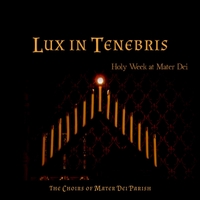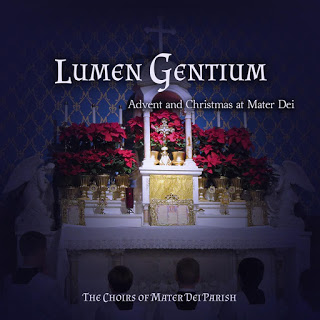This polyphonic Ave Maria is my newest composition to date. Written in five parts, there are two soprano lines as in the Christus Factus Est. This composition is released under Creative Commons, and a PDF download is available at the end of this post. Ave Maria was written in October 2015, save for minor editing.
Ave Maria
Background
This composition is a bit different for me. Usually, I start with a title and ancient lyrics and try to build a musical exposition of the topic. For Ave Maria, however, I just started with the title “TBD” and five empty staves. I wasn’t sure what I was going to end up with. After filling in a few measures, it just seemed like “Ave Maria”.
Originally, I put an intonation at the beginning of the piece, splitting into parts at “gratia plena”. Something didn’t seem quite right about it, and I realized the first measures sounded more like “Ave Maria” than “gratia plena”. Thus, the intonation was removed.
Discussion
Having received some feedback, I intended that Ave Maria should have more of a Renaissance sound, like Christus Factus Est. I’m not sure if I have succeeded in this, but I did make a point not to wander into other keys (except only briefly).
It is possible there may still be a few minor edits to make. No choir has attempted the piece, and there may be some awkwardly placed syllables. I *tried* to avoid parallel fifths, but was not entirely successful. Where they occur, altering them would either change the imitation undesirably (in my opinion) or result in a less desirable sound (again, just what my ear tells me).
Ave Maria
In the first five measures, all five voices address the one to whom we are praying, ending together on the I chord (G major). After the address, the intended attitude is one of awe and contemplation in the great things God did for Mary, preserving her from sin and filling her with grace from the moment of her conception (gratia plena, Dominus tecum, benedicta tu in mulieribus). This section is intended to be placid and clam.
At measure 41, there is a considerable contrast. Here we contemplate Mary’s greatest role, becoming the Mother of Jesus Christ, bearing God the Son in her womb, though still and perpetually a virgin. The musical structure resembles a fugue–not exactly a Renaissance construct–centered around E minor.
Sancta Maria
After lifting at the conclusion of the first part of the prayer, the texture becomes more full and the attitude pleading. All five parts again address Mary, the holy Mother of God (Mater Dei). The line is more drawn out, and the tempo increases a bit at “Mater Dei”.
Ora Pro Nobis
After the address, each part asks for Mary’s intercession, beginning low with the bass, and each higher part coming in after the part beneath it, the theme loosely being imitated. The descending dotted half and eighth note rhythm first introduced in Soprano 1 is then echoed by Soprano 2 and Tenor, while at various times each voice has four ascending quarter notes. The interleaved lyrics continue through the rest of the prayer, culminating finally in the calm Amen.
Final Thoughts
Leave a comment and let me know what you think.
About the Featured Image
The featured image is The Annunciation by Fra Angelico and is in the public domain.






What beautiful sounds. I am considering having my choir learn this Ave Maria. Fr. P gave me a notebook of your compositions. Is it okay to copy them for our choir? Do I need to pay to use them?
Thank you.
Regina
Thank you, Regina. You may certainly use those pieces for non-commercial purposes. Everything in that notebook, as well as the PDFs on this website, are available under a creative commons license. You can copy them for your choir and do not need to pay to use them. Since the time I made the notebook, I’ve composed quite a few new pieces. This category link will list them: http://www.catholicliving.net/category/compositions